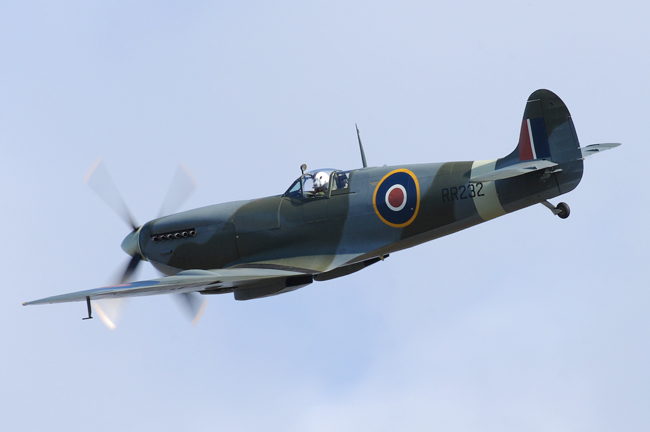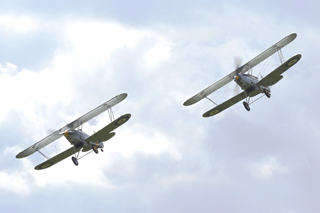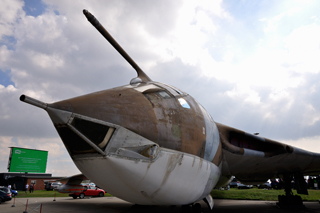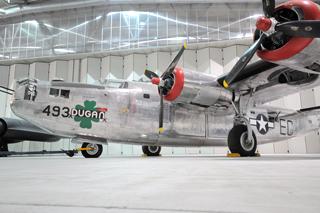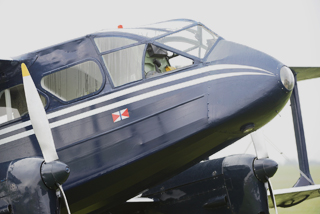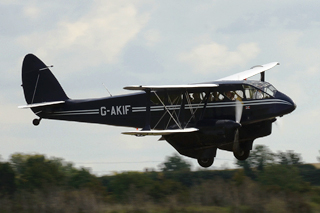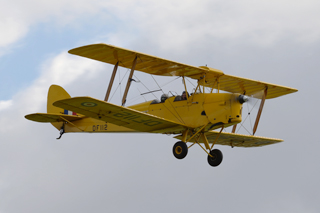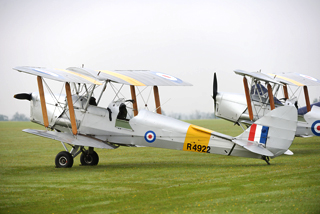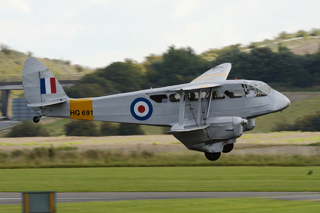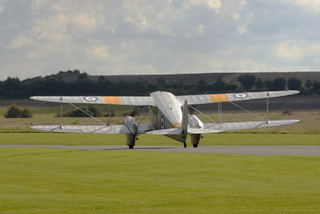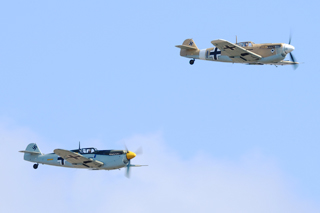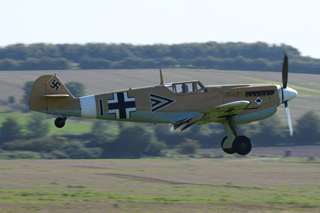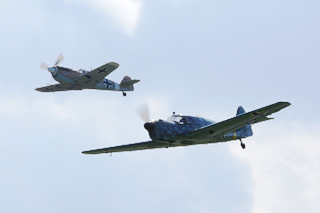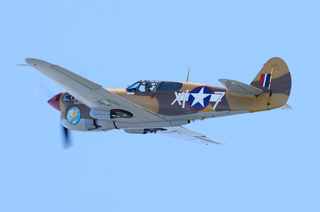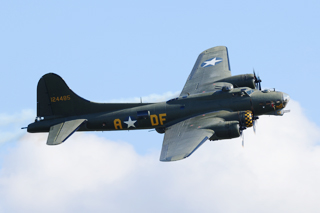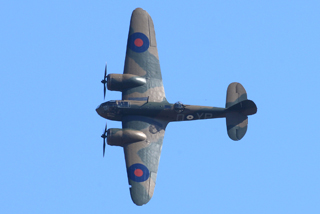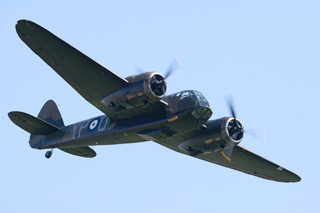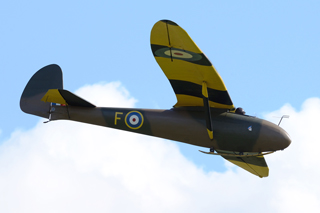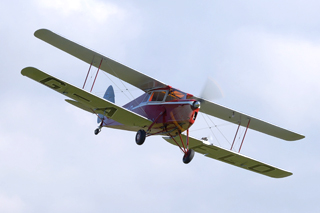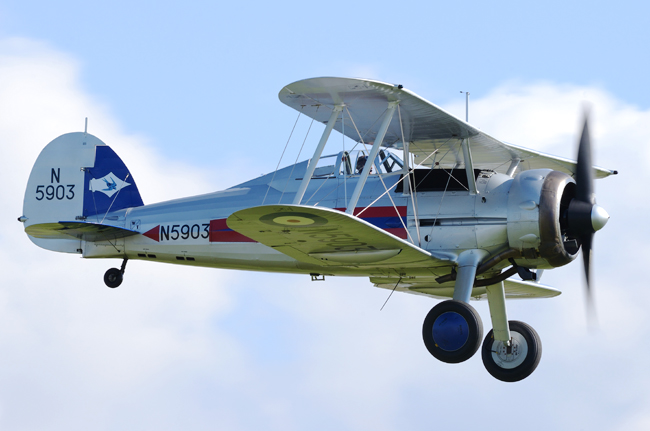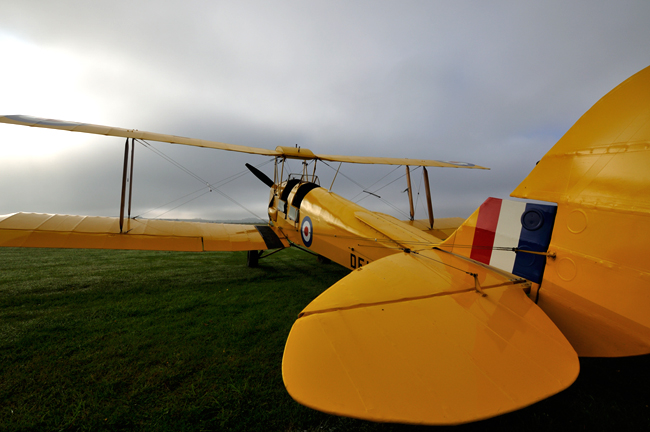This
eFLYER was developed in HTML for viewing with Microsoft Internet Explorer
while connected to the Internet: View
Online.
To ensure delivery to your inbox, please add eFLYER@barnstormers.com to
your address book or list of approved senders.
|
 |
ISSUE 431 - May 2016
Over 9,000 Total Ads Listed
1,000+ NEW Ads Per Week |
| Duxford Battle of Britain Airshow 2015 - Part I |
By Kevin Moore, Contributing
Editor & Photographer
Watford, Ontario, Canada |
|
|
Supermarine Spitfire Mk IX, RR232, taking part in the Battle of Britain Airshow 2015,
was one of 17 to participate in a mass formation flypast. |
| There is probably no aircraft in the world that is more well-known for the Battle of Britain than the Supermarine Spitfire, despite the fact that the Hawker Hurricane actually shot down more aircraft during that time than any other aircraft. However, the Spitfire is iconic, to say the least, and it was and is still loved by so many even today, not just in Britain, but around the world. The Duxford Battle of Britain Airshow is one place in the UK where you have the opportunity to see multiple examples of both the Spitfire and the Hurricane, in flight and on the ground, in numbers possibly exceeding those of any other place in the world. |
|
|
Biplanes that served in the early days of World War II
were the Gloster Gladiator, left, and the Hawker Nimrod, right. |
| However, the airshow wasn't just about Spitfires and Hurricanes, it was also about many other aircraft that participated in the Battle and/or entered the war around the same time. There was the Spitfire and Hurricane nemesis, the aircraft that they flew against during the Battle of Britain and throughout the war, the Messerschmitt Bf/Me109. There was also the Gloster Gladiator, the Hawker Nimrod and the de Havilland Dragon Rapide, to name but a few. |
|
|
| Whether visiting Duxford for an airshow, or a museum, both the Imperial War Museum and the American Air Museum are home to some beautiful aircraft including the Handley Page Victor, left, and the B-24 Liberator, right. |
| Duxford, the home of the Imperial War Museum and the American Air Museum, is also a very historic World War II aerodrome that was actually built, in part, by German World War I prisoners of war beginning in 1918. In 1938, the new British fighter, the Spitfire, were being delivered to 19 Squadron at Duxford. During World War II and the Battle of Britain, Duxford also became home to 310 Squadron in July of 1940, outfitted with Hurricanes and Czechoslovakian pilots who flew them and had escaped the Germans in France. They were eventually joined by 242 squadron, all of which were ultimately known as the "Big Wing." |
|
|
If Spitfires are what you like, Spitfires are what you'll get at the Battle of Britain Airshow! |
| Today, Duxford and the IWM, are the home of some of the best airshows in Britain. In 2015, they held the VE Day Anniversary Airshow, Flying Legends Airshow and The Battle of Britain Airshow, the latter of which we'll talk about here. The aircraft collection at Duxford, as well as the many vintage aircraft, from pre-World War I to jet aircraft post-war and later, will satisfy the interest of any aviation enthusiast and purist. |
|
| This was a large, 17 Spitfire formation that performed several passes. Virtually everyone was quiet so those around could take in the magnificent sounds of those fabulous Rolls-Royce Merlin & Griffon engines. |
| The late season Battle of Britain Airshow 2015 was a long awaited event for many. The collection of Spitfires and Hurricanes alone was a huge draw for the thousands of people who attended the show with more than 20 Spitfires on hand as well as a half dozen Hurricanes along with 2 fabulous Messerschmitt 109's. Add many other historic aircraft into the mix and it was truly an impressive show. |
|
| Five of the BBMF fighter flight with 3 Spits and 2 Hurris. |
| The Battle of Britain Memorial Flight had four Spitfires and two Hurricanes at the Battle of Britain Airshow who, at the end of the show, also teamed up with the famed RAF Red Arrows aerobatic display team, which we'll see later. The BBMF Spitfires included their Mk Vb (AB910), Mk LFIXe (MK356), Mk IIa (P7350) and Mk LF XVIE (TE311). Their Hurrcanes included the Mk IIc (LF363) and Mk IIc (PZ865). These fabulous aircraft are owned & operated by the RAF and are the same group who own & operate one of two airworthy Avro Lancasters, as well as several other historic RAF aircraft. |
|
|
| The beautiful de Havilland Dragon Rapide spent time doing passenger flights. |
| Stepping back from the fighters, other flying aircraft included the de Havilland Dragon Rapide, a 1934 plywood built, short haul biplane airliner that was capable of seating 6 - 8 passengers. Though designed for civilian use, at the outbreak of World War II, Rapides were utilised by the British military for passenger and communications purposes, though renamed as the de Havilland Dominie. There were more than 500 built for use by the military including the RAF and Royal Navy. Today, two airworthy examples survive in the UK and one in the US. |
|
|
| The lovely and iconic de Havilland Tiger Moth is a popular recreational aircraft around the world and appears at many airshow including these three at Duxford. |
| Another de Havilland aircraft flying at Duxford is the Tiger Moth. This aircraft was originally built by Morris Motors Ltd in Cowley, Oxfordshire and flew with the RAF, serial c/n 85861/DF112 at 25 Elementary Flying Training School in Peterborough. From there she served with 16 Polish FTS in Hucknall, 22 EFTS in Cambridge which became 22 Reserve Flying School, 11 RFS in Scone, 2 Grading Unit at Kirton-in-Lindsey, 1 GU in Digby and her final posting with the RAF, 202 Advanced Flying School at Valley. The aircraft was then sold into civilian hands, spending many years with various owners until its current owners, Fairmont Investments Ltd, loaned the aircraft to the folks at Duxford as a pleasure flights aircraft. DF112 was one of three Tiger Moths at the Battle of Britain Airshow, the other two being R4922 & DE974. Today, more than 60+ years later, many de Havilland and de Havilland of Canada Tiger Moths still fly around the world in many different countries. |
|
|
The de Havilland Dominie was the military version
of the civilian de Havilland Dragon Rapide. |
| The de Havilland Dominie was the military variant of the Dragon Rapide, as mentioned earlier. Dominie HG691 was built for and first flew with the RAF in 1943. Post-war, the aircraft reverted to a civilian use aircraft in 1946 and appeared at various airshows, aviation and other exhibitions, with several different civilian operators before eventually being restored back to her RAF livery sometime between 1999 and 2002. It is currently owned by Spectrum Leisure Ltd at Clacton Airfield though flies with Classic Wings doing pleasure flights at Duxford. |
|
|
The Spitfire and Hurricane's nemesis throughout
the war was the Messerschmit Bf/Me109. |
| Probably the most well known and famous of the German fighter aircraft was the Messerschmitt Bf/Me 109. The 109 first flew in May of 1935 with its first operational service coming during the Spanish Civil War. Though it was originally designed as an interceptor, later models of the aircraft were developed to operate in multiple roles from escort fighter to bombers, a fighter bomber, day and night, all-weather fighter, ground attack and finally reconnaissance. With almost 34,000 of the type having been built, it was the most produced fighter aircraft in history from 1935 - 1945. In 1937, a 109 mounted with a 1650hp DB 601R racing engine captured the world speed record for Germany for the first time, setting a new world speed record for a landplane with a piston engine with a speed of just under 380mph. Though almost always thought to be the fighter aircraft of the German Luftwaffe, 109's also flew with 14 other air forces including Spain, Romania, Finland and even Japan. The two flying examples at Duxford put on a great aerial display before participating in some mock combat over Duxford's skies. |
|
|
The Messerschmitt 108 was originally designed
as a recreational sport competition aircraft. |
| Flying against the Allied fighters during the airshow, in align with the 109's, was the Messerschmitt 108. It was originally designed in 1934 as single engine sport/recreational aircraft for the 4th Challenge International de Tourisme competition. The aircraft had very low fuel consumption, superb take-off and landing characteristics and was known to have good flight handling characteristics. Depending on the version, it has a maximum speed of over 300mph and, even with 4 aboard with baggage, it had a service ceiling of over 20,000' all powered by an inverted V-8 air-cooled engine. The Luftwaffe utilised the 108 during World War II as a liaison and VIP/personnel transport aircraft. |
|
|
The P-40F Warhawk, "Lee's Hope,"
one of only 2
"F" models still airworthy left in the world. |
| One of two American built aircraft that participated in the Battle of Britain Airshow 2015 was the Merlin powered Curtiss P-40F Warhawk, one of only two of the type still airworthy anywhere in the world. This aircraft was built in Buffalo, New York by Curtiss Aircraft. Its history is vague but she was found, abandoned & recovered, on the island of Espiritu Santo in the Vanautu Islands in the 1970s and was acquired by The Fighter Collection. Restoration was completed in Wangaratta, Victoria, Australia with completion of the work done in 2011 when she was finally returned to the air. The Warhawk had a service ceiling of 29,000', a maximum speed of 360mph and a cruise speed of 270mph. The P-40 could carry up to 2,000lbs of bombs by means of 3 hardpoints including one under the fuselage and one under each wing. |
|
|
| The Boeing B-17 Flying Fortress, flown as Sally B and proudly supported by the Sally B Supporters Club, also flies as the Memphis Belle. |
| The largest aircraft to participate in the 2015 Battle of Britain Airshow was the venerable Boeing B-17, probably most famously known for the "Memphis Belle" of which this aircraft wore the markings on the starboard side of the aircraft with the port side wearing the markings of "Sally B" and is the last remaining B-17 in Europe. Though based at Duxford, the "Sally B" is not part of the Imperial War Museum collection. The aircraft is funded in large part by the generosity and support of the 8000+ members of the "Sally B Supporters Club." It is incredible to think that this B-17 has continued to fly in the UK for more than 40 years through the dedication and support of the membership, veterans and others who are determined to keep her in the air. |
|
|
Flying Legends Bucker Jungmann, left,
and the lovely little Stampe SV4, right, both took part in the display. |
| Two wonderful little biplanes that also took part in the display were the Flying Legends Bucker Jungmann and the privately owned Stampe SV4. The Bucker Jungmann was a 1930s primary training aircraft that was utilised by the Luftwaffe, serving with almost every one of their primary training schools. They were built in Germany, Spain, Hungary, Czechoslovakia, Switzerland and even Japan. The Stampe et Vertongen SV.4 was a two-seat Belgian training aircraft that was also built under license in France and Algeria. It flew as both a tourer/training aircraft and as an advanced aerobatic trainer that first flew in 1933. Though production of the Stampe began pre-World War II, production was shut down during the war before post-war production began again in 1948 until 1955. In total, there were roughly 1000 Stampes built in 5 variants. |
|
|
| The Bristol Blenheim returned to the skies in the fall of 2014 after an 11 year restoration. |
| The last aircraft we'll look at this week is the Bristol Blenheim, a 2-engine aircraft originally designed for use as a small airliner. The aircraft proved to have excellent handling and speed characteristics and a modified version for military operations as a light bomber was borne. Though the Blenheim had a rough start as a bomber during early days of World War II, the aircraft found its niche as a night fighter. The Canadian version, the Bolingbroke, was a successful anti-submarine patrol and training aircraft. This Blenheim, a Mk I, was originally restored over a 5 year period during the late 1980s into the early 1990s, returning to the air in 1993. Sadly, she suffered severe damage during a landing accident in 2003 at Duxford. A trust was formed to help re-restore the aircraft once again and, over an 11 year period, the Aircraft Restoration Company at Duxford painstakingly brought the aircraft back to life once again, returning her to the air in the fall of 2014. |
|
|
Are you aware that gliders were used during World War II?
We'll look at 2 sailplanes and the DH87 Hornet Moth and more next week. |
| Next week we'll return to Duxford and the Battle of Britain Airshow 2015 to have a look at other aircraft that flew in the show and were displayed along the static line. |
|
| The two 109's in a lovely formation pass after their initial display. |
|
| Another look at the fabulous B-17 "Sally B" & "Memphis Belle." |
|
The Gloster Gladiator was a rugged, brute of an aeroplane
but what a lovely aeroplane she was. |
|
The de Havilland Tiger Moth is still a highly sought after warbird
and more than 500 airworthy examples exist around the world. |
|
| |
|




